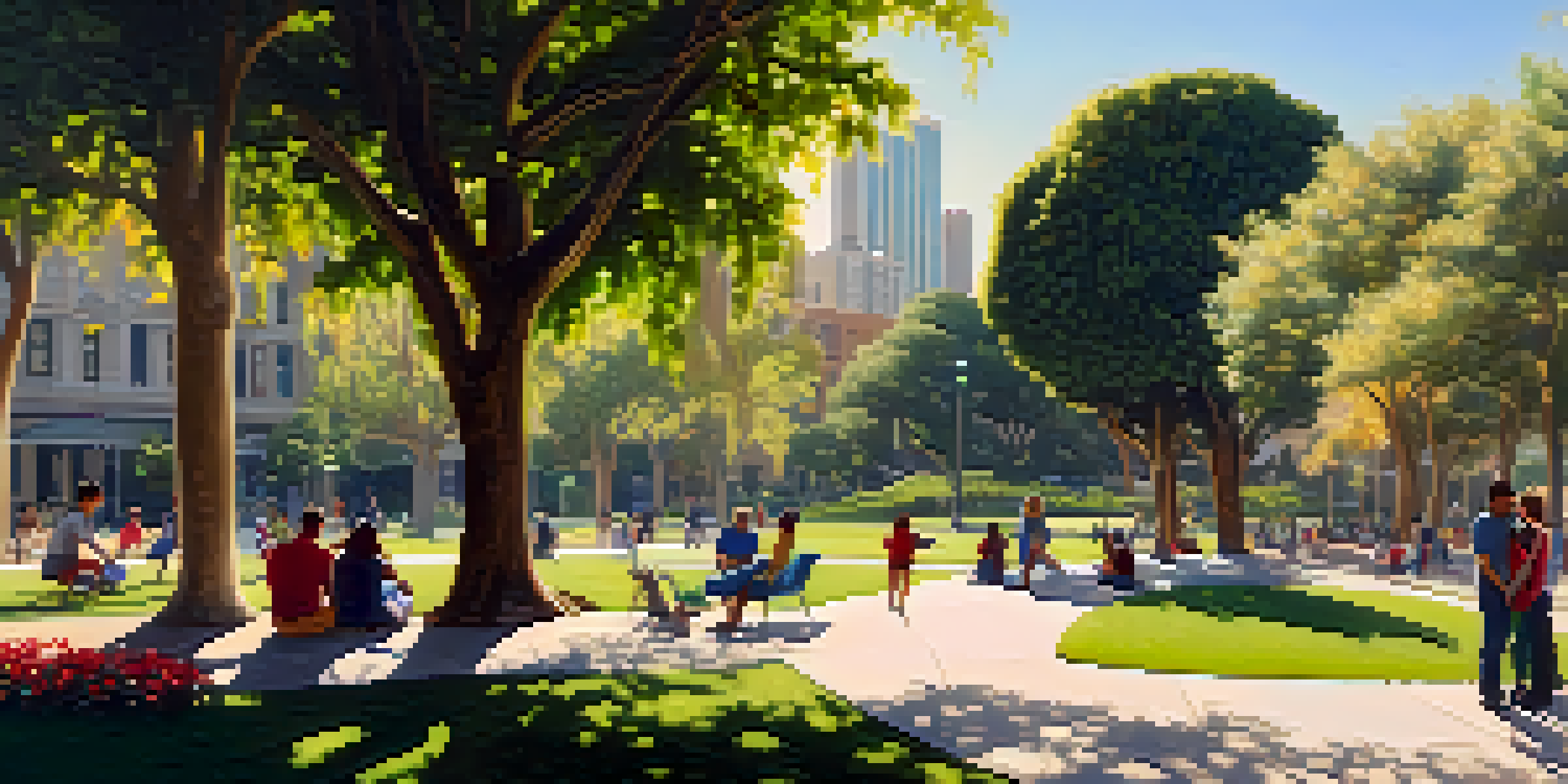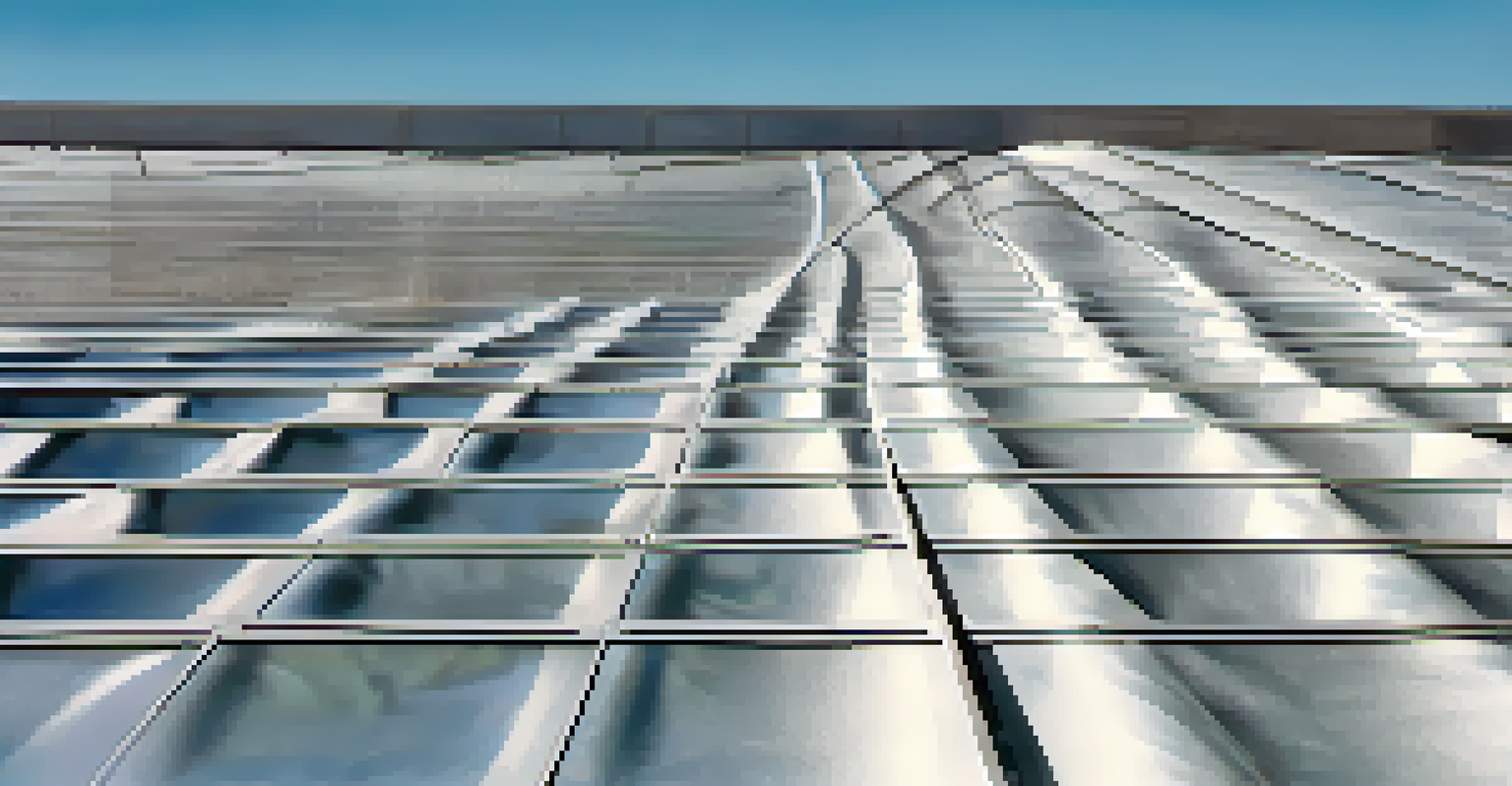Urban Heat Islands: Climate Effects in Los Angeles Neighborhoods

What Are Urban Heat Islands and Their Causes?
Urban Heat Islands (UHIs) refer to urban areas that experience significantly warmer temperatures than their rural surroundings. This phenomenon occurs due to human activities and the prevalence of materials like concrete and asphalt that absorb and retain heat. In cities like Los Angeles, where the sun shines bright, the heat gets trapped, leading to higher temperatures, particularly in densely populated neighborhoods.
The urban heat island effect is a critical issue that affects not only the environment but also public health and the economy.
The design and structure of urban environments play a crucial role in the formation of UHIs. For example, tall buildings can block wind and limit airflow, preventing natural cooling. Additionally, limited green spaces, which typically help cool down areas, exacerbate the heat retention in urban settings.
As the climate continues to change, the effects of UHIs are likely to intensify, making it essential to understand their causes. By recognizing the factors that contribute to this phenomenon, we can work towards developing effective solutions to mitigate their impact.
Impact of Urban Heat Islands on Local Climate
The presence of Urban Heat Islands in Los Angeles significantly affects local climate patterns. Temperatures in UHI areas can be up to 10 degrees Fahrenheit hotter than nearby rural regions, leading to discomfort and health risks for residents. This temperature disparity can also disrupt local weather patterns, potentially resulting in altered precipitation rates and increased air pollution.

Moreover, the heat generated by UHIs can exacerbate the effects of climate change. For instance, higher temperatures can lead to increased energy consumption as residents crank up air conditioning systems to stay cool. This, in turn, contributes to higher greenhouse gas emissions and further escalates climate issues.
Urban Heat Islands Explained
Urban Heat Islands (UHIs) are urban areas that experience significantly higher temperatures than their rural surroundings due to human activities and materials like concrete.
Understanding how UHIs influence local climate is crucial for developing strategies to combat their adverse effects. By addressing these challenges, we can create healthier living conditions for all Angelenos and work towards a more sustainable urban environment.
Health Risks Linked to Urban Heat Islands
The health implications of Urban Heat Islands are a growing concern for residents of Los Angeles. Higher temperatures can lead to heat-related illnesses, such as heat exhaustion and heat stroke, particularly among vulnerable populations like the elderly and those with pre-existing health conditions. The risk of respiratory issues also increases, as elevated temperatures can worsen air quality and trigger smog formation.
In cities, there is no more important challenge than addressing the heat and its impacts on our communities.
In neighborhoods heavily affected by UHIs, the consequences can be dire. Residents may find themselves staying indoors more often, which can lead to social isolation and mental health issues. Furthermore, the strain on healthcare resources due to heat-related illnesses can create a ripple effect, impacting the overall community.
Raising awareness about these health risks associated with UHIs is vital. By educating communities on how to protect themselves during extreme heat events, we can empower residents to take proactive measures for their health and well-being.
Vulnerable Communities in Los Angeles
Certain neighborhoods in Los Angeles are more susceptible to the effects of Urban Heat Islands, often due to socio-economic factors. Low-income communities may lack access to green spaces, adequate housing, or resources to cool their homes, making them particularly vulnerable during heat waves. This inequity exacerbates existing health disparities and highlights the need for targeted interventions.
For example, neighborhoods like South Los Angeles have been identified as having higher UHI effects, leading to increased health risks for residents. The lack of trees, parks, and other cooling elements means that these communities face greater challenges in coping with extreme heat.
Health Risks of UHIs
Higher temperatures in UHI areas can lead to serious health risks, including heat-related illnesses and worsened air quality.
Addressing the needs of these vulnerable communities is essential for creating a more equitable urban environment. By investing in green infrastructure and promoting public awareness, we can help mitigate the impacts of UHIs and improve the quality of life for all Angelenos.
Strategies to Mitigate Urban Heat Islands
To combat the effects of Urban Heat Islands, cities like Los Angeles can implement various strategies aimed at reducing heat absorption. One effective method is increasing the amount of greenery in urban areas through tree planting and the creation of parks. These natural spaces not only provide shade but also help cool the air through a process called evapotranspiration.
Another approach is the use of reflective or 'cool' roofing materials that minimize heat absorption in buildings. Encouraging the installation of such materials can significantly lower surface temperatures and reduce the overall heat in urban areas. Additionally, promoting green roofs or walls can enhance insulation while providing habitats for local wildlife.
Implementing these strategies requires collaboration between local government, community organizations, and residents. By working together, we can develop innovative solutions to combat the Urban Heat Island effect and create a more sustainable, livable Los Angeles.
Community Engagement in UHI Solutions
Engaging the community in Urban Heat Island mitigation efforts is crucial for their success. Local residents often have valuable insights into the specific challenges their neighborhoods face and can help identify effective solutions. By fostering community involvement, cities can ensure that initiatives are tailored to the unique needs of each area.
Workshops and educational campaigns can empower residents to take action, whether through tree planting events, advocating for more green spaces, or participating in local governance. When people feel connected to their environment, they are more likely to invest in its improvement.
Mitigation Strategies for UHIs
Cities can combat Urban Heat Islands by increasing greenery, using cool roofing materials, and engaging communities in local solutions.
Building a sense of community ownership in UHI solutions can lead to lasting change. Collaborative efforts not only enhance the physical environment but also strengthen social ties, making neighborhoods more resilient to the challenges posed by climate change.
The Future of Urban Heat Islands in Los Angeles
As Los Angeles continues to grow, the challenges posed by Urban Heat Islands are likely to persist unless proactive measures are taken. Climate change is expected to increase the frequency and intensity of heat waves, making it crucial for cities to adapt and implement long-term strategies. The future of Los Angeles depends on the city’s ability to innovate and invest in sustainable practices.
The integration of smart technology in urban planning could play a vital role in managing UHIs. For instance, using data analytics to monitor temperatures and air quality can help city planners make informed decisions about where to focus cooling efforts. Additionally, incentives for green building practices can encourage developers to consider environmental impacts.

Ultimately, the fight against Urban Heat Islands is not just about cooler temperatures—it's about creating healthier, more equitable communities. By taking action now, Los Angeles can lead the way in developing sustainable solutions that benefit all residents, regardless of their background.